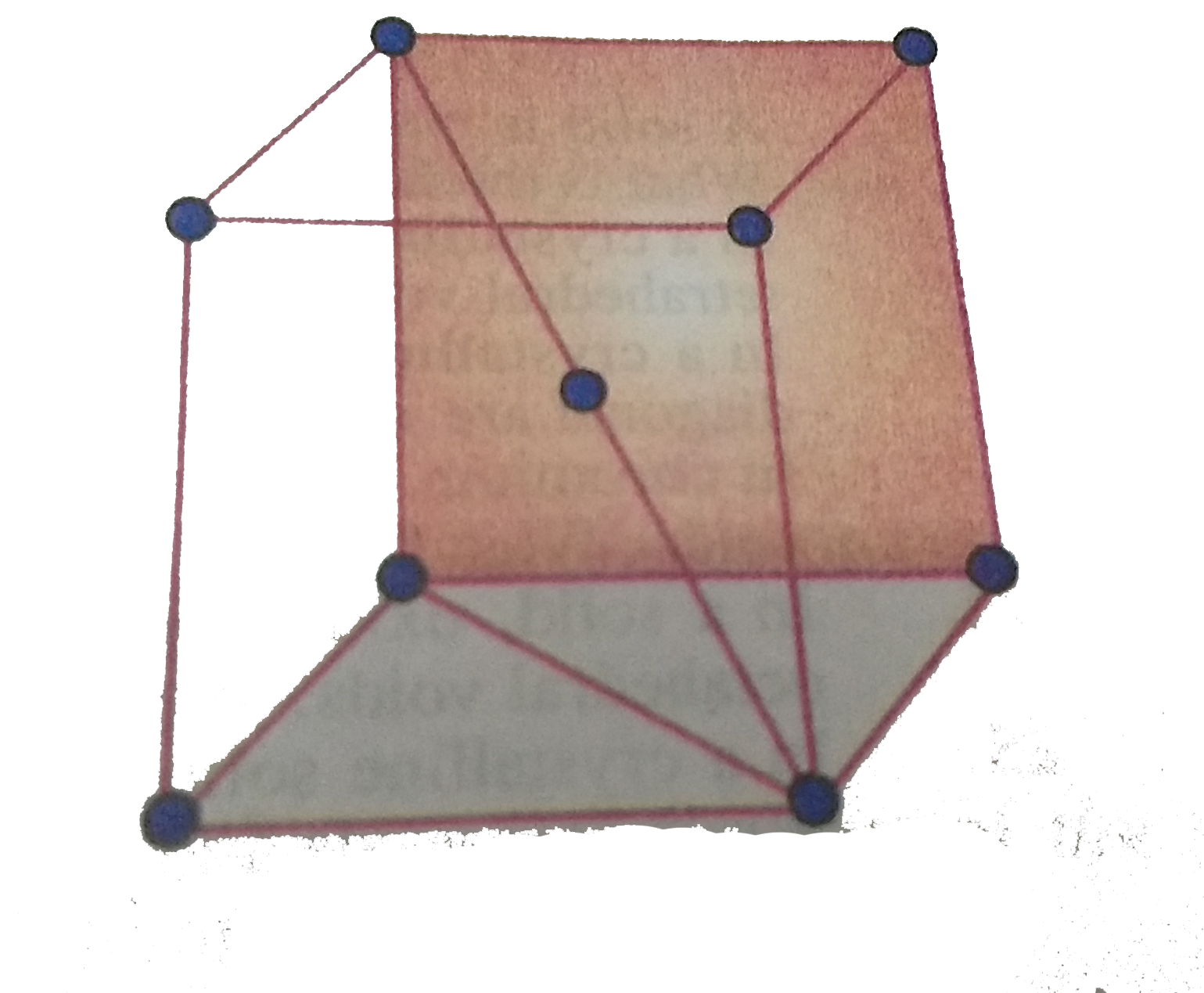An element crystallises in a b.c.c. lattice. Nearest and next nearest neighbours are respectively
8, 8
8, 6
6, 8
6, 6
The correct Answer is:B
Step by step video, text & image solution for An element crystallises in a b.c.c. lattice. Nearest and next nearest neighbours are respectively by Chemistry experts to help you in doubts & scoring excellent marks in Class 12 exams.
Updated on:21/07/2023Topper's Solved these Questions
- THE SOLID STATE BOOK - AAKASH INSTITUTECHAPTER - THE SOLID STATE EXERCISE - Assignment (SECTION - B) (OBJECTIVE TYPE QUESTION)
25 Videos
- THE SOLID STATE BOOK - AAKASH INSTITUTECHAPTER - THE SOLID STATE EXERCISE - Assignment (SECTION - C) (PREVIOUS YEARS QUESTION)
41 Videos
- THE SOLID STATE BOOK - AAKASH INSTITUTECHAPTER - THE SOLID STATE EXERCISE - EXERCISE
30 Videos
- THE S-BLOCK ELEMENTSBOOK - AAKASH INSTITUTECHAPTER - THE S-BLOCK ELEMENTSEXERCISE - Assignment (Section-J)
10 Videos
- THERMODYNAMICSBOOK - AAKASH INSTITUTECHAPTER - THERMODYNAMICSEXERCISE - ASSIGNMENT (Section -D) Assertion-Reason Type Questions
15 Videos
Similar Questions
Knowledge Check
A metal crystallises in b.c.c. lattice. The per cent fraction of edge length not covered by atom is :
A11.4%B12.4%C13.4%D14.4%An element occurs in the body centred cubic alttic with cell edge of 300 pm. The density of the element is 8.0g/cm3. Answer the following .
the number of nearest neithbours and the next nearbours are respectively.A4 and 6B4 and 8C8 and 8D8 and 6How many 'nearest' and 'next nearest' neighbours respectively does sodium have in f.c.c. lattice
A8,8B12,6C6,8D8,2
A certain element crystallises in a bcc lattice of unit cell edge length 27Å. If the same element under the same conditions crystallises in the fcc lattice, the edge length of the unit cell in Å will - (Round off to the Nearest Integer).
[Assume each lattice point has a single atom]
[Assume √3=1.73,√2=1.41]
View SolutionIf number of nearest neighbours, next nearest (2nd nearest) neighbour and next to next nearest (3rd nearest) neighbours are x,y and z respectively for body centered cubic unit cell, then calculate value of xyz.
View SolutionA compound AB crystallises in the b.c.c lattice with unit cell edge length of 390 pm. Calculate
(a) the distance between the oppsitely charged ions in the lattice.
(b) the radius of A+ ion if radius of B− ion is 175 pm.
View SolutionPotassium crystallises in a bcc lattice as shown in figure :
(a) What is the distance the nearest neighbours ?
(b) What is the distance between the next nearest neighbours ?
(c) How many nearest neighbours does each potassium atom have ?
(d) How many next nearest neighbours does each potassium atom have ?

View SolutionIn diamond lattice, all lattice points and alternate tetrahedral voids are occupied by carbon atoms. If diamond crystallizes in fcc form with edge length 'a' , find out (a)number of next nearest neighbours in diamond lattice (b)distance between the next nearest neighbours.
View Solution
